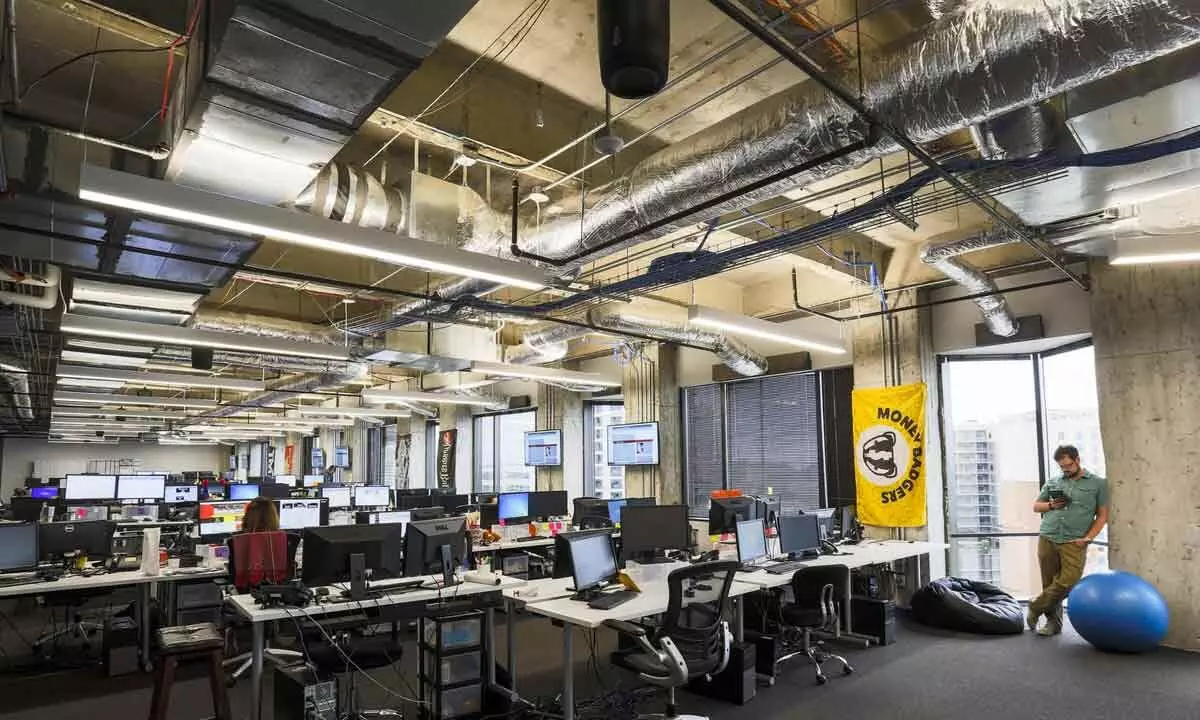How realty investors betting big on office spaces
In India, the demand for office space is on the upswing, after being hit for two years in a row. It went up last year as the pandemic-induced restrictions on mobility started getting relaxed gradually
image for illustrative purpose

It's only natural that investment will have a propensity for profits and more profits. The more, the merrier. And that precisely affirms why the largest chunk (45 per cent) of the $5.13 billion private equity investment into the real estate sector in 2022 flowed into office space. Warehousing was the second highest at 37 per cent, residential got 12 per cent and retail at 6 per cent. The Knight Frank India data reinforces the fact that office space remains investors' favourite asset class within the realm of real estate.
The year 2022 was horrendous. Though India was a sweet exception; a series of destabilising shocks -- geopolitical tension, stubborn inflation, skyrocketing oil price and volatility in the stock market – shook the world economy. Setting them aside, domestic and overseas institutional investments reposed faith on India's resilient real estate sector in general and the office space in particular. Nearly two and a half dozen deals were sealed during the year. A number of value-accretive propositions led investors to be increasingly driven towards the office space sector within the commercial real estate space. Typically, offices tend to be located in central business districts - areas with high demand and strong economic growth. Additionally, office buildings usually have a high degree of occupancy, which provides a steady stream of income for investors. And, because of their location, the value of the property, more often than not, also appreciates at a faster cliff than other form of real estate. This ensures a better return for the investors and also enthuse them to stay put.
Investment decisions are always taken after being reasonably assured of some key considerations which also include a value-accretive environment over a longer period of time. India is the connoisseur of investors, of all shapes and sizes and from across the world, not just because the business here offers a sustained return over longer-term, but the country has also improved a lot on various indicators in the World Bank's Doing Business report.
Investment has a direct link with the existing and potential demand. A spurt in demand in an expanding economy is a prerequisite for taking any investment decision. In India, the demand for office space is on the upswing, after being hit for two years in a row. It went up last year as the pandemic-induced restrictions on mobility started getting relaxed gradually and business and industry started calling their employees back to office to work, either on hybrid mode or full-time. The necessity to diversification and expand the workplace also fueled the demand growth. The scope for further spike in demand is also very much on the cards as India's economy is on a growth path. Led by IT/ITeS and BFSI sectors, office space absorption hit a three-year high in 2022. It was higher by 46 per cent than in 2021, 3.1 per cent higher than the average of pre- pandemic five years and second only to 2019, in terms of net absorption, in the last 10 years. Net leasing of domestic commercial office space is expected to grow by 10-15 per cent this fiscal and in the next one to 28-30 million square feet (msf) and 31-33 msf, respectively, Crisil said.
The vacancy level has also declined sharply in every successive quarter, indicating stability and a strong recovery in the office space markets. In the October-December quarter, the vacancy levels across the top six cities declined by nearly 200 basis points year-on-year to stand at a little over 16 per cent. The pace of new commercial space construction is also set to get traction as shivering cold in the North goes. Completions are likely to be in excess of 10 million square feet in till March.
Though headwind remains, the office space sector in 2023 will be driven by segments such as flex working space, healthcare-life sciences, global capability centres and others. Occupiers, mainly belonging to the IT and BFSI sectors, are cautious about new absorption. Many large corporates are hitting the pause button, which might slow down the leasing activity in the near-term. It has to be seen how the economy and the real estate sector weather the headwinds.
As is being widely expected that the global uncertainty is likely to abate towards the middle of the current year, the investment flow should improve further, which will augur well for the office space sector.
(The author is Co-founder of Easydesq)

